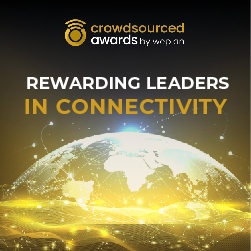When I think of the telecommunications industry, “What is essential is invisible to the eye” by Antoine de Saint-Exupéry in The Little Prince immediately comes to mind. From keeping us informed of the latest news and entertained while we stay home, to ensuring business continuity, we hardly notice our heavy reliance on the invisible networks that keep us connected – except when they disconnect.
Indeed, this year the telecoms industry has become even more central to modern society. Despite spikes in network usage and strained bandwidth due to more people spending time at home this year, telecoms have gone above and beyond to ensure connectivity and support essential services. Furthermore, as Asia Pacific nations march forward with 5G, Deloitte’s telecommunications industry outlook pointed out that telecoms will be trying to determine the ‘killer apps’ for 5G. Urgent transformation is needed in the networks – in not only the access, transport and core, but also how they embrace automation and collaborate with partners to deliver on promises of low latency, higher performance and throughput.
New entrants will also continue to disrupt the industry, and we can expect telecoms to form strategic alliances to keep up with digital disruption and provide customers with a competitive array of offerings. They need to abandon the mentality of working in silos, take inspiration from the software industry and embrace a Lean-Agile Mindset: a way of thinking related to striving for higher levels of efficiency, teamwork, employee motivation and work quality.
It’s all in the mindset
With a clear focus on innovation and collaboration to steadily deliver more customer value, telecoms have been shown to possess the capacity to adapt rapidly and deliver new service offerings at scale. But where do they begin?
1.Start internally
According to the Oracle AI@Work Study 2020, COVID-19 has resulted in 70% of respondents feeling that 2020 has been the most stressful year yet. 85% of them have had stress at work affect their home life, and 75% of employees think that their company should ramp up conversations around mental health and do more to support employees’ well-being. In the year ahead, future workplaces will need to prioritise staff wellbeing to maintain productivity.
Next, pandemic or not, economic conditions and consumer behaviour are constantly evolving, and enterprises need to keep pace and stay ahead of these expectations. As COVID-19 has reiterated the importance of building resilient skills, business leaders are quickly realising that innovation and business growth are now inextricably linked to employee-first HR practices. The brightest minds will be looking towards those who invest in skills development, and when they can voice their opinions freely, fresh new ideas and use cases will begin to flow naturally.
2.Focus on the customer experience
The most impactful names in technology have one thing in common – an obsession with user experience, powered by in-depth analysis of customer-interaction data. Traditionally, telecoms have access to this data, but they have not been optimised for insights and productivity. They must now go past digital channels, to use smart data and artificial intelligence (AI) from the front-end to the back office.
Consumers today also expect hyper-personalised, omnichannel, connected experiences, and enterprises should look beyond their industry for inspiration. For instance, SingTel, a multinational telecommunications provider in Singapore, became one of the first in the industry to venture into the e-payments space when they launched SingTel Dash. Today, their customer-led innovation journey has enabled them to consistently break new grounds, including forming a strategic partnership with Grab Holdings Inc. to emerge as one of Singapore’s first four digital banks.
3.Be open to working with partners if you have to
Depending on the organisation’s culture, competency, and size, you can go at it alone or form strategic partnerships. For instance, if you have huge access to an internal pool of competent and motivated talents, you have the option of looking internally to innovate and seamlessly transform all aspects of your offerings and your operations to meet market demands.
That said, opportunities lie ahead even for companies who do not have access to a large and strong talent pool. Hyperscalers and proven technology partners, with their technology investment and large global footprints, can enable enterprises to achieve business objectives – whether it be improving customer service or expanding their suite of offerings at scale in minimum time.
4.Innovate fast, but take careful steps
The clock is ticking, but the path ahead is uncharted. A persistent issue over the past few years is the worrisome trend of cyber-attacks and security lapses, which has resulted in significant economic losses and sometimes even unthinkable consequences. In fact, the Oracle and KPMG Cloud Threat Report found that cybersecurity and IT professionals are now 3 times more worried about corporate security than safety at home. This result should be unsurprising, given that prosecutors in Germany are looking into how a woman died from delayed treatment after a cyberattack at the hospital.
For those reasons, we should expect to see more sandbox environment created to trial emerging applications, and set and manage expectations. In 2021, we will also continue to witness an uptick in regulatory scrutiny and consumer awareness on data privacy and security. For innovation to be meaningful and impactful, telecoms must first and foremost consider adequate governance measures, and be prepared to anticipate and manage potential risks and issues to win the trust of regulators and consumers.
By Emily Ng, Global Key Account Director, Oracle





